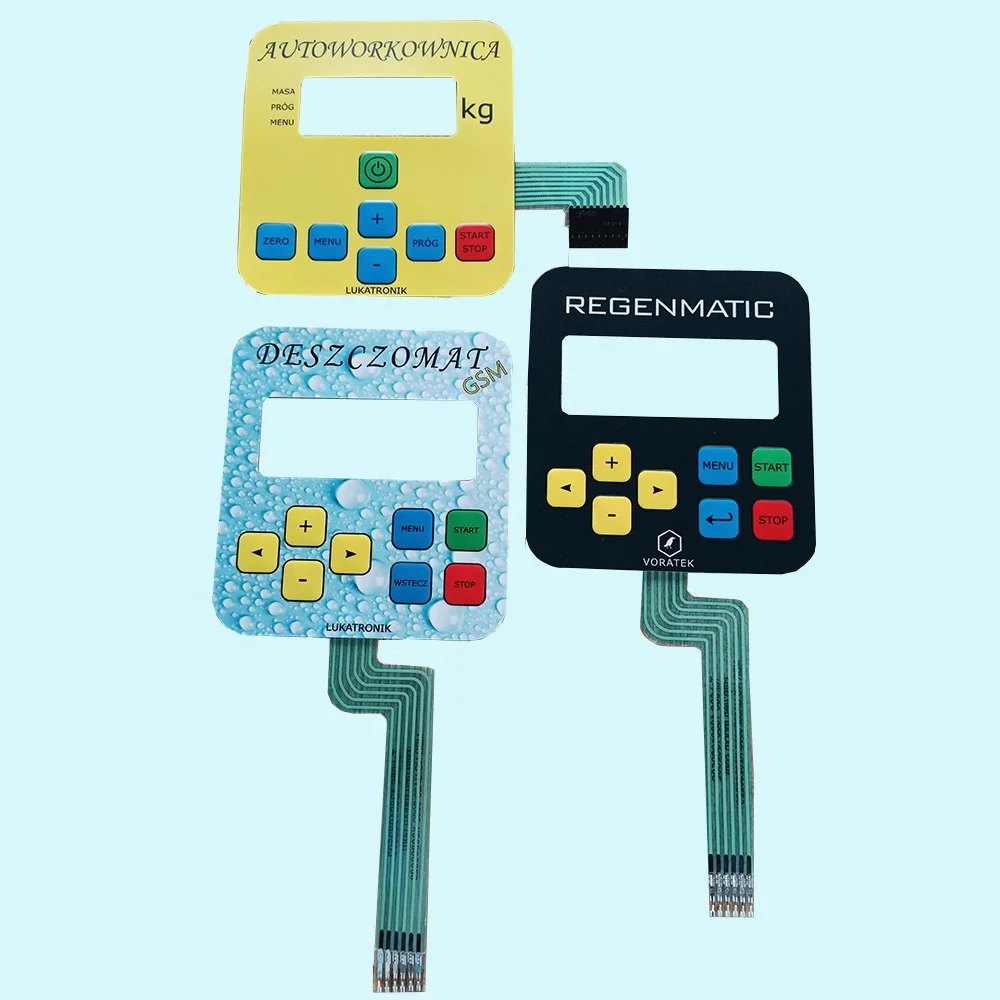Explore the Benefits of Using a Membrane Switch in Modern Devices
Explore the Benefits of Using a Membrane Switch in Modern Devices
Blog Article
Understanding Membrane Switches: The Key to Durable and Dependable Controls

What Are Membrane Layer Switches?
Membrane switches are an innovative remedy in the realm of interface modern technology, integrating performance and layout flawlessly. These devices act as an interface between customers and digital systems, integrating several components right into a small format. Typically built from versatile, thin layers of materials, membrane layer switches are designed to respond to touch, making it possible for individuals to connect with machinery and digital devices effectively.
The primary elements of a membrane switch include a printed circuit layer, visuals overlay, and a spacer layer that protects against unexpected activation. The graphic overlay can be personalized to reflect brand identity or individual preferences, boosting aesthetics while ensuring use. Membrane buttons are frequently made use of in various applications, consisting of clinical devices, customer electronic devices, and industrial tools, owing to their toughness and resistance to ecological variables such as wetness and dirt.
One of the vital benefits of membrane buttons is their ability to withstand deterioration, making them excellent for high-traffic atmospheres. Additionally, they are light-weight and need very little room, permitting cutting-edge designs in product development. Overall, membrane layer switches over represent a practical and effective option for contemporary electronic user interfaces, marrying innovation with user-centric style concepts.
Exactly How Membrane Layer Changes Job
The procedure of membrane layer switches over joints on an easy yet reliable system that converts individual input into electronic signals. When a user presses the switch, the leading layer deforms, allowing a conductive component in the circuit layer to make call with an equivalent conductive pad on the underside of the visuals overlay.
The style of membrane layer buttons can vary, yet they typically integrate domes or tactile aspects to give responses to the customer, improving the total experience - membrane switch. The products utilized in membrane switches, such as polyester or polycarbonate, add to their toughness and resistance to ecological factors, including dampness and dirt. The printed circuits are generally enveloped, which shields them from wear and tear over time.
Advantages of Membrane Buttons

In addition, membrane layer switches are understood for their toughness. Created from durable products, they are resistant to dust, dampness, and physical wear, which check dramatically prolongs their life expectancy contrasted to standard mechanical switches. This resilience makes them particularly appropriate for high-traffic environments and applications calling for long life.
One more considerable advantage is the ease of cleaning and maintenance. The smooth surface area of membrane layer changes reduces dust accumulation and is usually resistant to spills, making them suitable for settings that require regular sanitization.
In addition, membrane layer switches offer a structured profile, causing a thinner design that can be integrated right into numerous gadgets without including bulk. This feature not just enhances the aesthetic appeal however additionally adds to a much more ergonomic product design.
Applications of Membrane Switches
Versatile and user-friendly, membrane switches find applications across a large range of markets, consisting of medical tools, consumer electronic devices, and commercial equipment. In the medical field, these buttons are indispensable to gadgets such as diagnostic equipment, individual tracking systems, and infusion pumps, where dependability and convenience of cleaning are crucial. Their capacity to maintain and endure severe environments capability makes them suitable for such applications.

In customer electronics, membrane switches are used in items like microwaves, cleaning machines, and push-button controls - membrane switch. Their streamlined layout enables user-friendly interface, improving the overall customer experience while giving resilience and resistance to damage
Industrial equipment also takes advantage of membrane layer switches, specifically in control panels for equipment and automation systems. These buttons provide security versus dirt and moisture, ensuring consistent performance in challenging settings. Furthermore, their adjustable features enable makers to tailor them to details operational needs, boosting effectiveness and performance.
Selecting the Right Membrane Layer Switch
When selecting a membrane button, it is important to consider numerous aspects that influence efficiency and viability for details applications. The main considerations consist of environmental conditions, responsive responses, toughness, and layout specifications.
First, examine the operating setting; switches revealed to dampness, chemicals, or extreme temperatures call for certain materials to make certain long life and performance. Next off, review the demand for tactile feedback. Relying on customer interaction, some applications may take advantage of a tactile feedback to validate you could check here activation, while others may favor a non-tactile design for aesthetic reasons.
Toughness is another crucial element; membrane layer buttons should be made to endure frequent use, effects, and abrasion. Ensure the selected switch can endure the expected lifecycle, specifically in high-usage situations.

Verdict
To conclude, membrane layer switches over work as crucial parts in the style of reputable and durable control systems across numerous markets. Their portable click here to find out more design, combined with robust building and adjustable features, improves user interaction while making sure durability in requiring settings. The adaptability of membrane changes permits tailored solutions that satisfy particular functional demands, reinforcing their significance in modern innovation. As industries remain to evolve, the importance of integrating reliable membrane layer button services can not be overstated.
Membrane changes stand for an important element of modern user interface layout, mixing capability with resilience in numerous applications.Membrane switches are a sophisticated solution in the realm of user interface technology, incorporating performance and design perfectly. Typically built from versatile, thin layers of materials, membrane switches are developed to react to touch, allowing users to interact with equipment and digital tools efficiently.
The layout of membrane layer switches can vary, yet they typically include domes or responsive elements to offer feedback to the user, enhancing the general experience.In conclusion, membrane switches offer as vital parts in the layout of sturdy and reputable control systems throughout different markets.
Report this page